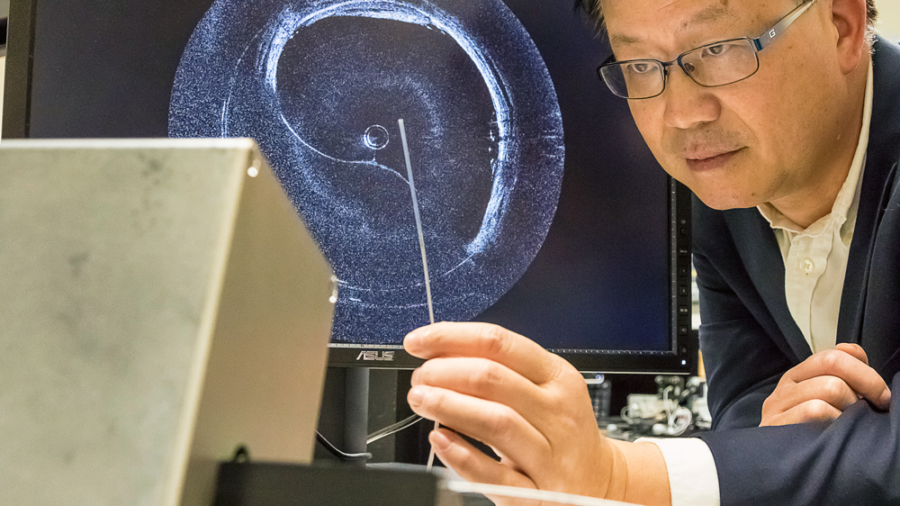Chen Wins $2.9 Million NIH Grant to Develop Intravascular Imaging System
By Lori Brandt, UCI Samueli School of Engineering
July 6, 2020 – The NIH National Heart Lung and Blood Institute has awarded Zhongping Chen, professor of biomedical engineering, a four-year $2.9 million grant to continue the development of a new imaging technology that will enhance clinicians’ ability to identify vulnerable lesions, tailor interventional therapy and monitor disease progression for patients with cardiovascular disease.
Chen, a pioneer in the field of biophotonics, proposes to make a multimodal intravascular imaging system that combines three sophisticated technologies into a single catheter device. These technologies are the high resolution of optical coherence tomography, deep tissue penetration of ultrasound and the biomechanical contrast of optical coherence elastography (a technique that maps the elastic properties of soft tissue). The collaborative research project involves Pranov Patel, professor of interventional cardiology at the UC Irvine School of Medicine, and Qifa Zhou, professor of biomedical engineering at the USC Viterbi School of Engineering.
According to Chen, cardiovascular disease is responsible for 1 in 4 deaths, or 650,000 Americans, every year. It is the leading cause of death in the United States. Ruptured atherosclerotic plaques are the main cause of acute coronary events, and it is of lethal consequence. Clinically, early detection of the latent vulnerability of plaques is the first line of defense against such deadly circumstances, and it relies on visualizing both the structural and biomechanical properties of tissue. Accurate characterization of a plaque lesion can facilitate better treatment management by furthering understanding of disease progression.
“We expect the development of the proposed high-speed, high-penetration-depth and high-sensitivity system and probe to have significant impact to both basic science and clinical understanding of plaque pathogenesis,” said Chen. “This will be a powerful tool for providing a quantitative means to benchmark and evaluate new medical devices and therapies.”
Read full UCI Samueli School of Engineering article.



